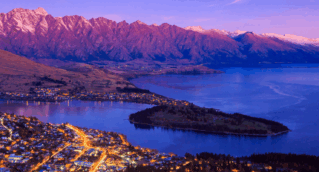27 November 2025
Reflecting on the NZ Water Conference and Expo

This year’s New Zealand Water Conference & Expo welcomed a record 2,494 delegates and exhibitors from around 50 countries to Ōtautahi Christchurch—an impressive demonstration of the sector’s growing momentum and global relevance. McKay was proudly represented by Alex Bruintjes, Ariki Davis, Dean Morgan, Daniel Blair, Matthew Hill, John Murphy and Michael Coates, with team members attending from regions across the country.
Held from 28 September to 3 October, the event proved to be an excellent opportunity for McKay to strengthen networks, share insights, and explore the emerging technologies reshaping water services. The Expo floor showcased not only innovative solutions from suppliers but also major displays from Tier 1 contractors currently delivering significant water infrastructure projects throughout New Zealand. Being able to engage directly with these organisations provided valuable context for the challenges and innovations driving the sector forward.
A key highlight for the team was meeting with Gillian, the CEO of Water New Zealand, where McKay officially joined Pipeline, Water NZ’s information- and training-sharing platform. This membership offers a deeper window into the rapidly evolving direction of water services in Aotearoa, particularly as the sector undergoes a period of radical reform and long-term investment. We were also invited to engage early with Gillian’s team regarding securing a stand at the next conference—an encouraging signal of McKay’s growing presence in the industry.
Across the first few days, the team attended numerous symposiums focused on the future of water services, upcoming regulatory changes, and shifting industry priorities. These sessions, combined with conversations with Tier 1 contractors, FM companies, and suppliers, helped reinforce McKay’s position as a proactive contributor to national water infrastructure development.
The week’s standout event, however, was the Downer Awards Gala Dinner on Wednesday evening. The celebration of outstanding achievement across the water sector doubled as a powerful networking forum, with McKay’s involvement in SMF works even receiving mention during the awards—further affirming the value of our presence at industry events of this scale.
One of the most significant takeaways from the conference was the discussion around new compliance standards for small wastewater treatment plants—defined as serving fewer than 1,000 people. The Waikato region, where McKay Hamilton plays a major role, contains a substantial proportion of these small sites. With around 70 percent of these plants requiring reconsenting within the next decade, the financial, environmental, and public health pressures on the sector will be considerable. This shift is likely to drive major investment in site upgrades and compliance monitoring—areas where McKay is well positioned to support regional councils and communities.
The conference reaffirmed both the scale of change underway in New Zealand’s water sector and the critical importance of McKay maintaining a visible, well-connected presence. With regional representation across the country and strong relationships with industry leaders, McKay is well placed to contribute meaningfully to the future of water services in New Zealand.



